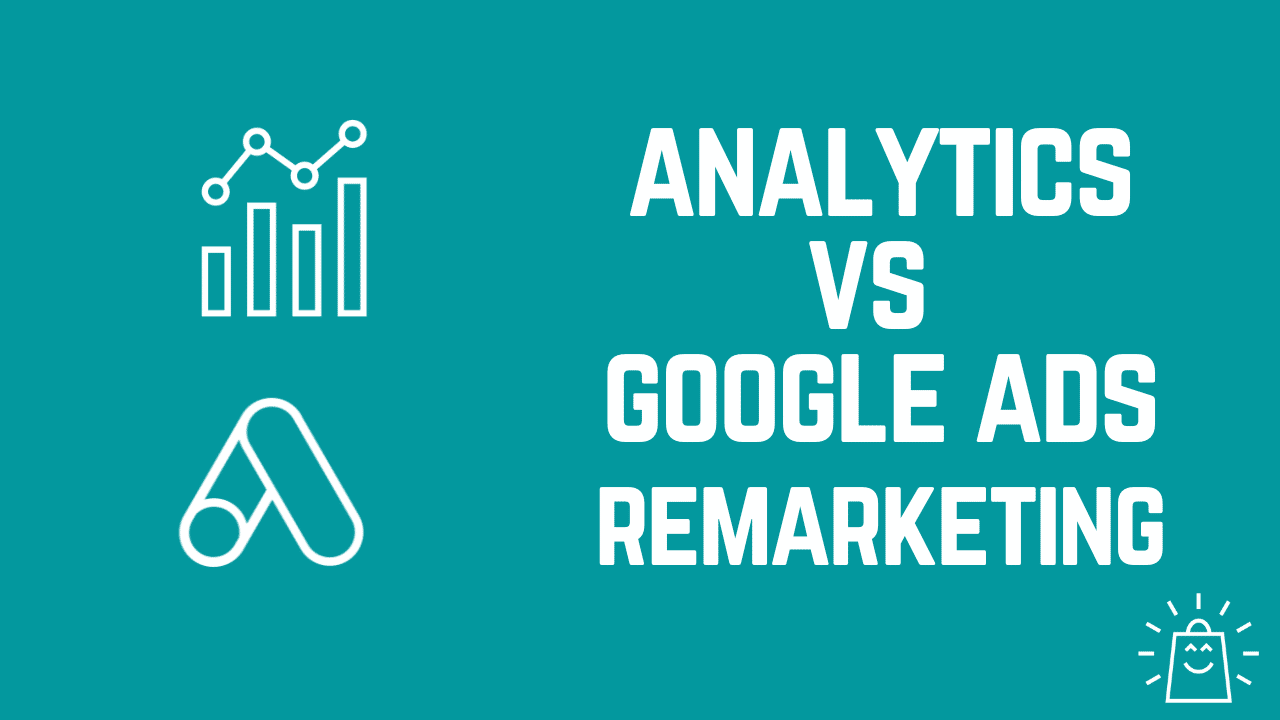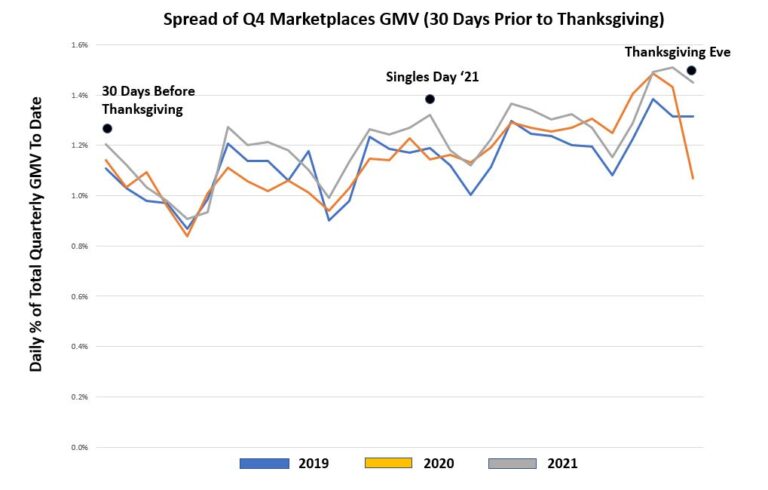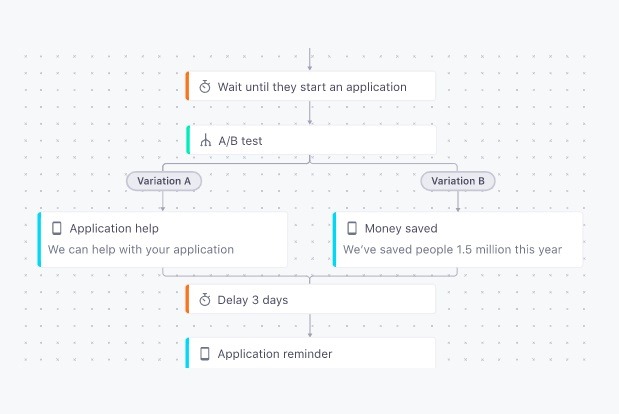Last Updated on September 9, 2022

When using remarketing lists to target customers, you should always be looking for that one thing that’ll give you a competitive edge.
Sometimes the focus of the remarketing debate is the platform, like Google vs Facebook. Other times it’s the method, like static vs dynamic remarketing.
In this article, we will see how Google Ads remarketing stacks up against using remarketing audiences from Google Analytics.
We’ll compare the differences in the way user data is sourced and how this relates to using (or creating) remarketing lists
Let’s dive in!
How Remarketing Audiences Work
No matter which method you use to create your remarketing audiences, they both work in a very similar way:
- Someone visits your site and does certain things
- Your tracking tags capture these actions
- You can create audiences of users that display similar behaviors
- You use these remarketing audiences in your Google Ads campaigns
But while they seem very similar from a high-level point of view, the devil is in the details.
So let’s start by comparing the two.
Google Ads vs Google Analytics Remarketing
The easiest way to understand the differences between the two is to put them next to one another.
| Google Ads | Google Analytics | |
| Data source | Google Ads Remarketing tag | Google Analytics tracking code |
| Setup difficulty | Moderate: install remarketing tag on each page and make tweaks per page type | Difficult: changes to tracking code, GA custom dimensions, creating dynamic attributes, etc. |
| Audiences creation | Automatic | Manual |
| Type of audiences | 4 automatically created:
Option to configure additional ones.
|
The sky is the limit.
Based on all data inside of Google Analytics.
|
| Dynamic remarketing | Possible, but needs the correct tags on the website. | Possible, but need changes to Analytics tracking code AND the correct tags on the website |
Now let’s dig into the details of each method. We’ll start with Google Ads and will then cover Google Analytics.
Remarketing with Google Ads Audiences
We’ve done a whole piece on setting up remarketing audiences in Google Ads, which includes step-by-step instructions, so check it out if you want an in-depth guide.
Here, we’ll only provide a brief overview and discuss the type of data used, the installation process, and the ways you can use Google Ads remarketing audiences.
The Data Source
A specific piece of code, known as Google Ads remarketing tag allows Google to track your site visitors and, based on this data, create audience segments.
So, when a user visits a product page with a remarketing tag, this triggers a code to run and place the unique ID of this visitor on a remarketing list (for instance, “Product page viewers”).
Then you can use these audience lists or segments in your campaigns.
The Setup
The installation process takes some effort.
The remarketing tag has to be added to each page on your website and depending on the page that someone is on, some data needs to be loaded automatically. Like the ids of the specific products, they were looking at.
The Utility
Remarketing audiences in Google Ads are usually used to target cart abandoners, past customers, product viewers, and similar groups of users.
Now that you have a good idea of how remarketing in Google Ads works, let’s look at how things work in Google Analytics.
Remarketing with Google Analytics Audiences
Again, we’ll provide a summary of the most important things you need to know. If you want more, checkout out our detailed guide on Google Analytics remarketing.
The Data Source
Most people already have Google Analytics installed on their store.
And by default, there already is a lot you can do in terms of remarketing audiences.
But to run Dynamic Remarketing campaigns, you need to make some additional tweaks to the tracking code.
The Setup
If you are only interested in running static remarketing campaigns, or running them as part of remarketing lists for search ads, you can use the basic setup of Google Analytics and probably you won’t need to make any changes.
But most ecommerce businesses, want to show ads that display the exact product a visitor was previously looking at.
So to get that to work, we need a way for Google Analytics to understand what a visitor is doing on our site. What products are they looking at, what are they adding to their cart, what do they end up buying, etc?
This is what changes need to be made:
- Link Google Ads to Google Analytics
- Add Dynamic Attributes in Google Analytics
- Adjust tracking code to send data from your site to Google Analytics
- Create Analytics audiences based on this data
- Sync audiences with Google Ads account
If you’re not a technical person, it can be a good idea to enlist the help of a web developer to modify the tracking codes in Analytics. Because even after you finish the setup, tweaking dynamic attributes to create a remarketing audience in Google Analytics can be quite demanding.
Default Analytics audiences are easy, but remarketing lists are carved out from the data by setting conditions and sequences (following “and” and “or” logic, also by excluding non-relevant data) and it’s hard to get them right the first time.
The Utility
The main advantage of Google Analytics remarketing is that it allows you to be more granular when creating audiences.
On top of what people do on your site, you’re able to leverage all of the information that’s inside Google Analytics.
You can create a custom audience based on the device used to access your site, the online behavior of users while they were on your site, the duration of their session, the traffic source, etc.
If you have a lot of traffic (thousands of users per audience), you can even create subsets of users.
Now, let’s compare these remarketing audiences.
Which Remarketing Audience Should You Use
So, which is better – Google Ads remarketing vs Google Analytics?
There is no right or wrong answer to this question.
Google Analytics gives you a little bit more flexibility when it comes to audience creation, but its setup is a little more difficult.
So that’s what it comes down to for most advertisers: what’s the quickest way to get started with dynamic remarketing?
Our recommendation is to go with Google Ads. then should you grow so big that you feel limited when it comes to the audiences you can create, you can always switch to Google Analytics, or run the two together.





